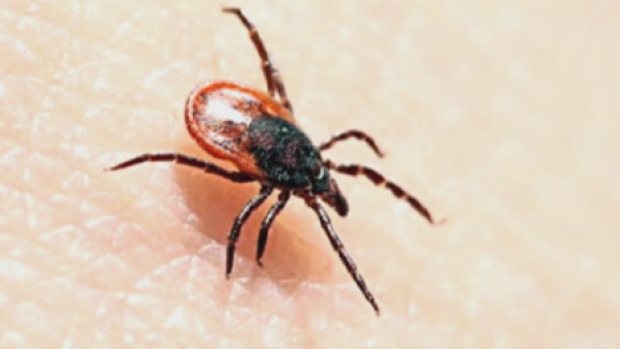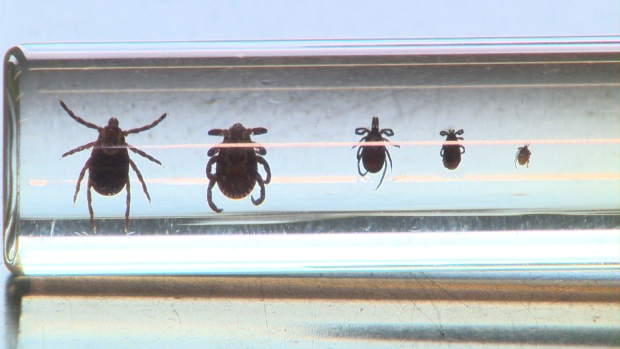What is Lyme Disease?
Lyme Disease is an inflammatory disease characterized at first by a rash, headache, fever, and chills, and later by possible arthritis and neurological and cardiac disorders, caused by bacteria (Borrelia Burgdorferi spirochetes) that are transmitted by ticks.
Did you know?
According to the Canadian Lyme Disease Foundation, only 30% of Lyme patients report experiencing a rash, and only 9% develop the classic bull's eye rash. Research has shown that the bacteria that causes Lyme Disease is present in all bodily fluids including: blood, saliva, breast milk, semen, vaginal fluids, etc. Lyme Literate MDs now believe that Lyme Disease can be passed between mother and child through the placenta and breast milk and between sexual partners. In 2013 the Centers for Disease Control and Prevention (CDC) announced that Lyme disease is much more common than previously thought, with over 300,000 new cases diagnosed each year in the United States. That makes Lyme disease almost twice as common as breast cancer and six times more common than HIV/AIDS. Early treatment of Lyme disease is critical, however Lyme is very difficult to diagnose because symptoms vary from person to person. There are over 100 known symptoms of Lyme disease. Lyme Symptoms
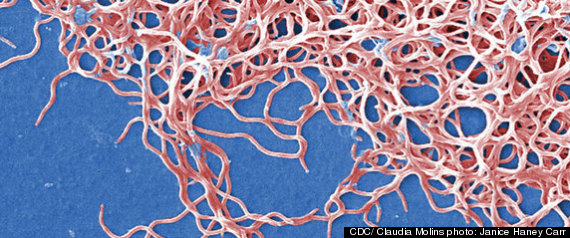
A cluster of Borrelia burgdorferi bacteria, which causes Lyme disease. Humans catch it when bitten by ticks. These bacteria belong to a group called spirochetes, which resemble coiled springs.
CDC/ Claudia Molins photo: Janice Haney Carr
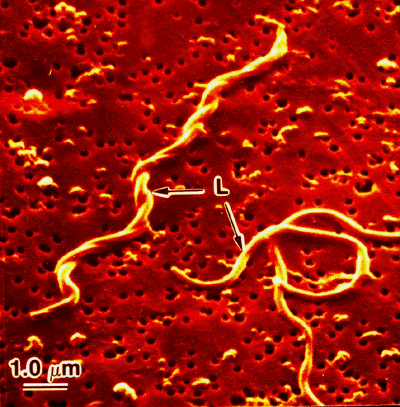
How Lyme Disease Bacteria Migrate Through Blood Vessels
New Research from the University of Toronto: www.contagionlive.com - September 8th, 2016

Fall is upon us. Are you feeling worse?
Many Lyme patients report increased symptoms as the weather gets a little cooler, continuing through the winter months.
Self care and taking time for yourself may be in order. Keep reading for suggestions on how to best make it through you fall flare-up.
Why Can't We Get Better?
Dr. Horowitz shares his experience in treating Lyme Disease, tick borne illness, and related co-infections and to offer insight into the root causes for chronic illness and share his road map for recovery.
Recorded at Western Connecticut State University on May 12, 2015.
Through the Avril Lavigne Foundation, Avril Lavigne raised and donated $60, 000 to help children fight Lyme disease.
Read story


A few articles and videos to get you started.
Look under Lyme Information for more links.
Touched By Lyme: When family members don't believe you have Lyme
The Marilyn Denis Show - Lyme 101
Dr. Richard Horowitz discusses Lyme Disease
Eleven Things That Can Make A Lyme Disease Patient Feel Worse
Patients worried about Lyme disease right to push for answers
 by Donna Lugar as it appeared in The Chronicle Herald, Halifax, Nova Scotia Published September 3, 2015
by Donna Lugar as it appeared in The Chronicle Herald, Halifax, Nova Scotia Published September 3, 2015
I would like to respond to the Sept. 3 article titled “False-positive Lyme tests concern researcher,” about concerns expressed by Dr. Dan Gregson, an infectious disease consultant at the University of Calgary who is researching Lyme disease.
First of all, thank you for the article as any awareness raised about Lyme and tick-borne diseases is better than none. However, the article examines only a small segment of the real issue. The real issue is why are people looking elsewhere for a diagnosis? Could it be that they have gone to a number of doctors and have had a number of tests but nothing has been diagnosed and they are trying to find out what is wrong with them? Could it be that they have so many symptoms, affecting so many systems, that no other diagnosis makes sense? Could it be that they are so frustrated with being told that there is nothing wrong with them and that it is all in their head that they have no other option than to look elsewhere?
It is a well documented fact that the ELISA, the test often used to diagnose Lyme disease, has sensitivity and specificity issues and is not supposed to be used to diagnose Lyme. The test is supposed to be supplemental to a clinical diagnosis, if used at all. It is not supposed to be a diagnostic tool. This is quite plainly explained in Health Canada's Adverse Reaction Newsletter, Volume 22, Issue 4, October 2012 (www.hc-sc.gc.ca/dhp-mps/medeff/bulletin/carn-bcei_v22n4-eng.php#a1). It is also a well documented fact that there are several states in the United States that now have laws whereby doctors have to advise patients that just because their ELISA comes back negative, they may still have Lyme or a Lyme-like illness. Unfortunately, there are very few doctors that can clinically diagnose Lyme disease unless one is lucky enough to get the tell-tale bull’s eye rash which is a definitive sign of Lyme – no testing required.
I was one of the fortunate ones in that I was clinically diagnosed by a Lyme-literate doctor. He based his diagnosis on a very comprehensive symptom chart, of which I had 48 symptoms at the time of diagnosis. The symptoms alone could have been anything. The symptoms together added up to a couple of tick-borne diseases which treatment was able to drastically reduce before my doctor closed his practice, leaving myself and many other Atlantic Canadians looking elsewhere for diagnosis and treatment.
“People are just looking for a cause of their symptoms.” Well, yes, we are. Would not everyone want to know what is causing their symptoms, many of which can be extremely debilitating? Unfortunately, our present medical system does not work when it comes to multi-systemic diseases/illnesses. With usually only “one symptom at a time” allowed by many doctors, it is almost impossible to get a timely and accurate diagnosis. Doctors end up trying to treat each individual symptom rather than trying to find out if there is an underlying cause.
I believe the researchers ascertained that there were a large number of false-positives by sending blood from a sample group of people to various labs in the U.S. and apparently blood work for seemingly healthy individuals came back positive. I am given to understand that many of the blood tests cannot differentiate between a present infection or a past one. I am also given to understand that some people can have Borrelia burgdorferi yet not have any symptoms of Lyme disease, so how does one ensure that this wasn’t the case with some of the false-positives?
I would also like to note that from 2002-2012 there were 171 confirmed and/or probable cases of Lyme in Nova Scotia. In 2013 alone, there were 154, with 114 in 2014. These are confirmed and probable cases. Those of us who have been clinically diagnosed are not counted in the numbers, so those numbers are just a drop in the bucket. I would also like to note that the number of disease-carrying ticks in Nova Scotia is steadily climbing and can now be found throughout the province and some ticks carry more than just Lyme disease, such as Powassan virus, Rocky Mountain spotted fever, anaplasmosis, etc. Ask your doctor what they know about co-infections. My guess would be that almost 100 per cent will not know what you are talking about.
My ELISA came back negative. I had over 40 varying symptoms. My GP advised that there was nothing more that she could do. What would you do?
Donna Lugar of Bedford is founder of the Nova Scotia Lyme Disease Support Group (www.facebook.com/pages/Lyme-Disease-in-Nova-Scotia-the-Maritime-Provinces/217895438247422).
What are Co-Infections?
Co-infections are just what they sound like. Many Lyme patients have other infections, either through the same tick bite or from another bite from a different insect at a different time. Many of these co-infections remain dormant until their immune system is compromised. Some of the most common Lyme Co-infections are Babesia, Bartonella, and Ehrlichia.
The following symptoms were excerpted from Diagnostic Hints And Treatment Guidelines For Lyme And Other Tick Borne Illnesses, by Joseph J. Burrascano Jr., M.D. (Fifteenth Edition 2008).
Babesia (Babesiosis)
A protozoan spread by ticks, blood transfusion, and in utero.
Air hunger
Cough
Fatigue
Fevers
Headache
Hemolysis
Imbalance without true vertigo
Mild encephalopathy
Shaking chills
Sweats
Bartonella (Bartonellosis, also known as cat scratch fever)
Spread by bites from infected ticks and in utero.
abnormal liver enzymes
encephalopathy
endocarditis
flu-like malaise
headache
hemolysis with anemia
hepatomegaly
high fever
immune deficiency
jaundice
lymphadenopathy
myalgias
myocarditis
papular or angiomatous rash
somnolence
sore throat
splenomegaly
weakened immune response
Ehrlichia (Ehrlichiosis)
Spread by bites from infected ticks
elevated liver enzymes
headaches
myalgias
ongoing fatigue
persistent leukopenia
thrombocytopenia
Co-infections must be treated along with Lyme Disease in order to make have the best chance of recovery.

Tickborne Diseases: Widespread, Serious, and Taking Us By Surprise
by Maryn McKenna
I spent most of last week at the International Conference on Emerging Infectious Diseases, a 1,500-person meeting of epidemiologists, physicians and microbiologists that is co-sponsored by the Centers for Disease Control and Prevention and the American Society for Microbiology. The ICEID, as it’s known for short, happens every two years, but this iteration was way overdue, postponed twice from its initial date of spring 2014 because so many potential attendees were working on the international outbreak of Ebola.
As a result, when this scary-disease convocation assembled, there was a lot to talk about—and in fact, a good portion of the meeting was devoted to re-examinations of the public health response, medical strategy and vaccine research that swirled around the Ebola epidemic. But at less-attended speeches, and in the afternoon hours when the newest research debuts on big posters, other public health concerns—less headline-grabbing but equally serious—peeked through.
I came away thinking we ought to be a lot more worried about ticks.
Some people already are, of course. As I described last month, the CDC has redrawn its maps of Lyme disease, the disease most commonly carried by ticks, to display how rapidly risk of it is rising in the northeastern US: 260 hot-spot counties now, compared to 69 20 years ago. (Two years ago, the CDC raised its estimate of the number of new Lyme infections that occur each year in the US from 30,000 to 300,00—10 times as much.) Also last month, the Entomological Society of America released a “policy statement” on ticks that amounted to an urgent call for action, saying in part: “…Environmental, ecological, sociological, and human demographic factors [have] created a near ‘perfect storm’ leading to more ticks in more places throughout North America.”
What’s at stake in the tickborne disease explosion flagged by the ESA and displayed in the ICEID presentations isn’t only Lyme disease (but more on that later). It is also other diseases carried by ticks—anaplasmosis, babesiosis, ehrlichiosis and more—that are less well-known and, because of that, often not detected or treated. Here, from the conference, are a few examples.
A group of researchers working at the Minnesota Department of Health suspected that the number of tickborne diseases recorded in Minnesota was too low. That’s important, because the state’s count of infections becomes part of the national record, and those numbers determine whether tick-related diseases become a priority for funding. To test the state’s record, the team randomly selected medical charts from hospitals and clinics in a Minnesota county where Lyme and its brethren are common, and checked them for billing codes that would indicate whether the patient was tested for or diagnosed with a tickborne disease. The result: There were three times more cases of Lyme, anaplasmosis and babesiosis occurring than the state knew about.
Those high rates in Minnesota turn out not to be unusual. In Arizona, one-fourth (11 out of 42) of high school kids attending a summer football camp came down with another tick-related illness, tickborne relapsing fever. Five of the 11 had to be hospitalized. It was the largest outbreak of the disease in Arizona in 30 years. Even though they were staying in rustic cabins, the students had no idea they were in danger of ticks, and that turns out not to be unusual. In Georgia, researchers from Georgia Southern University interviewed people visiting the university health center about whether they thought they might have been exposed to ticks, and then compared the accounts with blood tests that could confirm tick bites. Out of 258 people, only 4 percent of them knew they had been bitten by a tick—but 56 percent had antibodies showing they had been bitten.
And more of us are going to have to start wondering about our risks. Until now, a built-in protection against tickborne diseases has been that the tick species that carry particular pathogens have specific geographical ranges. That’s why, for instance, Lyme disease clusters in the northern United States, while the illness that sickened the Arizona high schoolers flourishes in the Western US. But as climate change affects animal and insect ranges, those guarantees are collapsing. In Maryland, researchers for the first time have found local ticks carrying babesiosis, a parasitic infection (sometimes called “America’s malaria”) that can be passed undetected by blood transfusions and until recently has been confined to the Northeast.
New tickborne diseases are emerging as well—and often, flying under radar. Dr. Bobbi Pritt of the Mayo Clinic described an illness that affected two men seeking care at a Mayo satellite clinic in Eau Claire, WI: one a healthy 54-year-old who liked to spend time outdoors and was bitten by a tick at a woodland cabin, the other a 23-year-old cystic fibrosis patient, recovering from a double lung transplant, who was bitten in his own backyard. Thanks to alert lab workers who noticed the men’s test results were a little off—a finding later backed up by a US Army lab, and then by the CDC—the cause was identified as a never before seen infection related to a tickborne illness carried by mice. The disease is so new that the organism hasn’t yet been given a name (Ehrlichia muris eauclairensis has been proposed, to mark the location where it was first spotted), but already, Pritt said, 80 patients have been identified in five states. One-third had to be hospitalized. It’s not clear how wide a range the disease might have.
Finally—because descriptions of tick-related diseases seem to focus on fever and headache and not very serious-sounding symptoms—it was troubling to be reminded by Dr. Paul Mead of the CDC how serious Lyme in particular can be. He described the national detective work that swung into action after a young Massachusetts resident passed out while behind the wheel of a car; the car rolled to a stop, paramedics attempted to revive him, and when he could not be brought back, his tissues were given for transplant. A careful worker at a tissue bank noticed signs of inflammation inside his heart—and that led to a discovery that the victim’s undiagnosed Lyme disease had caused sudden cardiac death. Scouring patient reports, Mead said, revealed 45 patients who survived “heart block”—an interruption of the heartbeat—because of Lyme infection, and five others who died when their Lyme disease triggered what looked like a heart attack.
I’ve written elsewhere about the recent recognition of Heartland virus, Powassan virus and Borrelia miyamotoi in the US, and additional tickborne diseases in places as far apart as China (severe fever with thrombocytopenia) and Sweden (Neoehrlichia mikurensis). But to hear so many reports in such a short period of time just underlines: Tickborne diseases are increasing, in range and in severity. Whatever we’re doing to protect ourselves, it isn’t enough.
Lyme Ontario has made a video of Lyme Warriors.
Check it out and see just a few of the people struggling with Lyme disease in Ontario. Knowledge is power.
Let's spread the word to protect others from getting this terrible disease and to help change the outcome for current Lyme patients.
It should not be this difficult to be diagnosed and treated.
Faces Of Lyme in Ontario
LLMD Maureen McShane spoke to the CBC about Lyme Disease after contracting it herself.
Dr. Maureen McShane lives in Montreal and treats many Canadian patients with Lyme disease in New York State. She discusses tick bites, thebull's eye rash, the trouble with testing, Acute VS Chronic Lyme Disease, Babesiosis and many other important Lyme Disease issues. Click the link to listen to her interview.
CBC Interview with Dr. McShane
Lyme disease diagnosis in 4-year-old Brigus girl could be 1st in N.L.
Doctor and family with knowledge and a history Lyme Disease help young girl get a quick diagnosis in Newfoundland.
Grandpa’s Run 4 Lyme
On January 2, 2015, David Woodhall, 73, quietly started running on his YMCA track in Waterloo, Ontario. He has a plan to run across Canada, starting at St. John’s Newfoundland and finishing in Vancouver, British Columbia, hoping that if he got injured in running, he could continue on a bike or in the pool doing laps.
He has run over 2096 km as of June 29, 2015 and has already crossed from Newfoundland into Nova Scotia then into P.E.I., through New Brunswick and now he is into Quebec.
Why is he doing this at his age?
The run to raise awareness, education and to fund-raise is for his grandson, James D. His mother, a Lyme patient who was misdiagnosed at the time, nursed both him and his sister as infants, and he began to show signs of Lyme disease when he was only eight years old. Today he is 16. He has brain damage affecting most facets of his memory, executive functioning, concentration and ability to make connections and cannot go to school. He has multiple complication diagnoses, faints, sometimes walks with a cane and has extreme pain every moment of every day. He is sleep deprived and isolated and fights to stay upbeat and positive, but it has been and continues to be a long, hard road to recovery.
To see the full story or to make a donation to help cover David's grandson's medical bills, please check out: www.grandpasrun4lymedisease.com

The Link Between Lyme and MS
Information from: The National Multiple Sclerosis Association
Lyme disease can cause delayed neurologic symptoms similar to those seen in multiple sclerosis (MS) such as weakness, blurred vision caused by optic neuritis, dysesthesias (sensations of itching, burning, stabbing pain, or “pins and needles”), confusion and cognitive dysfunction, and fatigue. Lyme disease symptoms may also have a relapsing-remitting course. In addition, Lyme disease occasionally produces other abnormalities that are similar to those seen in MS, including positive findings on magnetic resonance imaging (MRI) scans of the brain and analysis of cerebrospinal fluid (CSF).
These similarities in symptoms and test results have led some people with MS to seek testing for the presence of antibodies to Borrelia, to determine if their neurologic symptoms are the result of Lyme disease or truly MS. The distinction is important because Lyme disease, especially when treated early, often responds to antibiotic therapy, whereas MS does not.


Avril Lavigne on Good Morning America in her first television interview since her diagnosis:
Thank you Avril for shining a light on this terrible disease.
Daniel Corso and Tanner Cookson rode across Canada to bring awareness about Lyme Disease.

These inspiring guys are from St. Catharines, Ontario. Daniel and Tanner started their ride in Maple Ridge, British Columbia in May and after 8,310 kms, ended up in St. Johns, Newfoundland. Congratulations to them for completing such an amazing journey and thank you Daniel and Tanner from the Lyme community! Please check them out on Facebook to show your support and read their daily ride dedications.

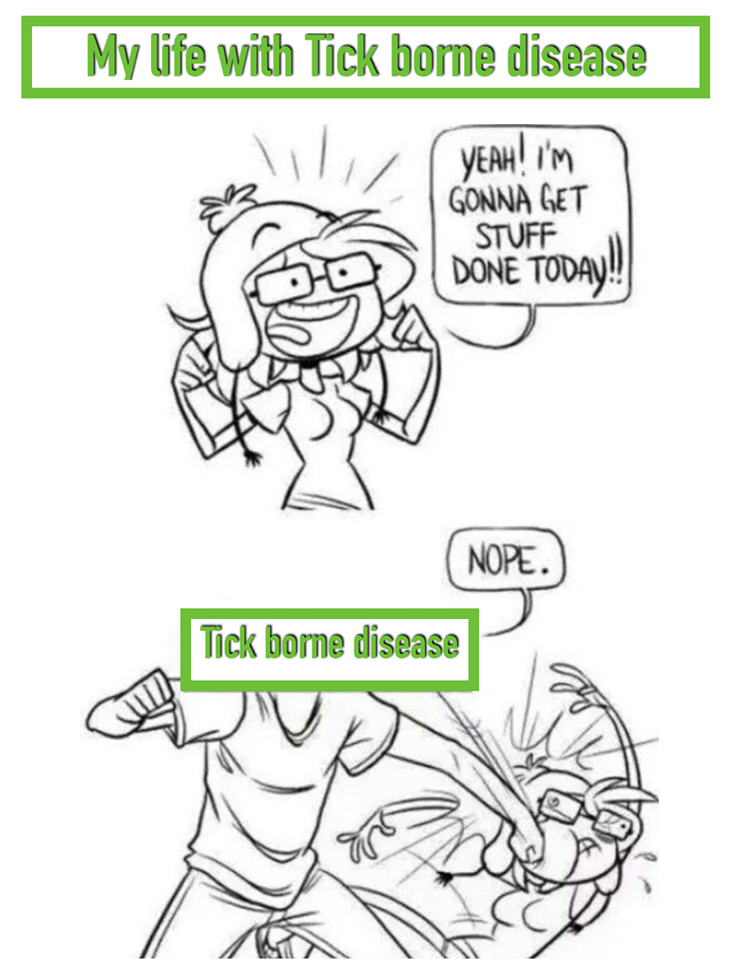
My name is Jodi Stansfield and six years ago I became ill. Over four years ago my health deteriorated and I had to take a leave of absence from my career. After seeing over thirty doctors and having countless tests, I can now confirm that I have Late Stage Lyme Disease.
Lyme disease is in Canada. Through this process I have learned that it is, in fact, all around us. Effective testing and treatment must be done through the United States at this point, but the disease itself is here. In December of 2014 the House of Commons passed Bill-C442, The National Lyme Disease Strategy Act, which will promote awareness and prevention of Lyme, address the challenges of timely diagnosis and treatment and push for further research. There is a long way to go, but Canada is slowly beginning to realize this is becoming a national crisis. The Act is endorsed by the Canadian Medical Association, the College of Family Physicians of Canada, and the Canadian Lyme Disease Foundation.
If people you know are suffering from neurological problems, debilitating fatigue, balance problems, joint pains, memory and cognitive problems, etc. please encourage them to have Lyme testing through the U.S. done so they can include or exclude it in their search for an answer. Many Canadians have been misdiagnosed with MS, Lupus and Fibromyalgia. It is worth looking into. I wish I had known that the Lyme tests I did in Canada, when I first got sick and again a few years ago, were deeply flawed and ineffective at detecting Lyme. I would like to help others who are battling for their quality of life. I would like them to get their answer sooner than I did.
Please help spread the word that Lyme disease is in Canada.
Thank you for visiting our site.
Our goal is to build a resource for others
with Lyme disease.
updated September 2016
